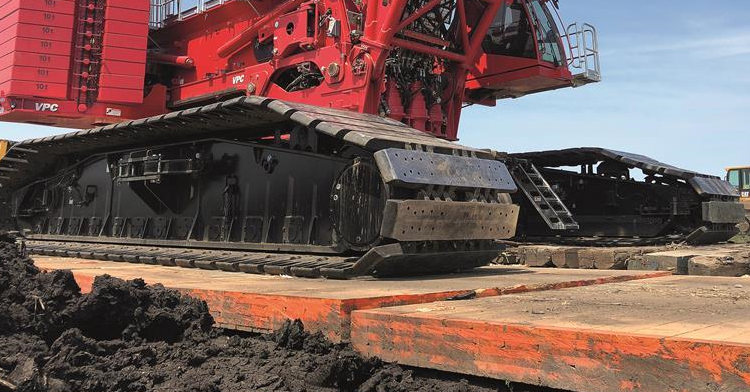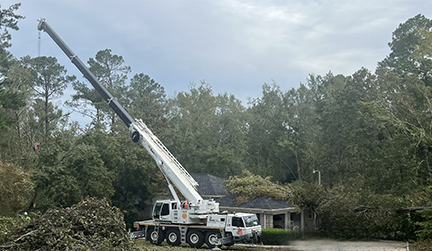
Just as a solid foundation is critical to the construction of any house or building, ground stabilization is of utmost importance to a successful crane operation. It provides a platform that helps ensure accurate lifting and precise object placement, plus safety for the crane operator, workers and property. The April issue of American Crane & Transport (ACT) Magazine discusses this crucial topic and includes a list of the latest products in ground stabilization from several manufacturers.
It all starts with the soil
One cubic yard of soil can weigh as much as a typical car, 3,000 pounds, and soil comes in differing varieties. According to OSHA, there are three different classifications of soil. Type A soil is cohesive and has a high unconfined compressive strength; 1.5 tons per square foot or greater. Examples include clay, silty clay, sandy clay and clay loam.
Type B soil is cohesive and has often been cracked or disturbed, with pieces that don't stick together as well as Type A soil. Type B soil has medium unconfined compressive strength; between 0.5 and 1.5 tons per square foot. Examples include angular gravel, silt, silt loam and soils that are fissured or near sources of vibration, but could otherwise be Type A.
Type C is the least stable type of soil. It includes granular soils in which particles don't stick together and cohesive soils with a low unconfined compressive strength; 0.5 tons per square foot or less. Examples are gravel and sand. Because it is not stable, soil with water seeping through it is also automatically classified as Type C soil, regardless of its other characteristics.
Unfortunately, in Florida most of the soil is Type C. This means extra precautions must be taken when stabilizing the ground where a crane will be working, requiring a pad with larger footprint, thickness, or both.
Crane pads and mats are the most common form of stabilization and placed between the outriggers and the ground. Outriggers extend from the crane and can exert hundreds of thousands of pounds of pressure, so the size, thickness and materials of the pads and mats are critical. In the case of a crawler crane, the crane will sit directly on top of the pads as shown in the photo above. Materials have traditionally been timber and steel, however, requirements for ground bearing pressure have become more stringent. Also, the need to lighten loads and reduce costs have resulted in different wood configurations, composites and even precast varieties.
Want more information?
Read “Stabilization from the ground up” at ACT’s website by clicking here. To see complete descriptions of soil types at OSHA’s website, click here. Image above courtesy of American Crane & Transport (ACT) Magazine.
